cloyster
Attributes
Stats
-
HP
-
Attack
-
Defense
-
Special Attack
-
Special Defense
-
Speed
Summary
Cloyster is a Water/Ice-type Pokémon introduced in Generation I.
Type: Water / Ice
Abilities:
- Shell Armor: Prevents the Pokémon from receiving critical hits.
- Skill Link: Maximizes the number of times multi-strike moves hit.
- Overcoat (Hidden Ability): Protects against damaging weather effects and powder moves.
Physical Characteristics:
- Cloyster resembles a large, bivalve mollusk with a spiky, dark gray shell.
- Inside the shell is a light purple, spherical body with a mischievous grin and two eyes.
- The shell has two layers, with the outer spiky one providing extra protection.
- Its tongue is visible and adds to its menacing appearance.
Behavior and Habitat:
- Cloyster is typically found in cold ocean waters, often near reefs or submerged caves.
- Known for its defensive nature, it rarely opens its shell, protecting its soft body from predators.
- It can swim rapidly by expelling water from its shell, using jet propulsion to escape threats.
- Cloyster are solitary Pokémon, usually found alone rather than in groups.
In Battle:
- Cloyster excels in defense and can use its shell to withstand strong attacks.
- It is a versatile battler with access to powerful moves such as Icicle Spear, Hydro Pump, and Shell Smash.
- Its Skill Link ability makes moves like Icicle Spear and Rock Blast particularly effective, always hitting the maximum number of times.
- Strong against Flying, Ground, and Dragon types, but vulnerable to Electric, Fighting, Rock, and Grass types.
Evolution:
- Cloyster evolves from Shellder when exposed to a Water Stone.
Interesting Facts:
- The shell's spikes are said to be harder than diamonds, making Cloyster one of the most durable Pokémon.
- Despite its tough exterior, its inner body is highly sensitive, which is why it remains hidden most of the time.
- Cloyster's evolutionary line is known for its connection to the tides, with Shellder often found clinging to Slowbro's tail in a symbiotic relationship.
- It is often associated with pearls due to its clam-like appearance and the mystery of what lies within its shell.
Pokémon Sprites
Evolution Chain
Moves
Level Up
- Level 0: Icicle Spear
- Level 1: Tackle
- Level 1: Twineedle
- Level 1: Leer
- Level 1: Supersonic
- Level 1: Hydro Pump
- Level 1: Aurora Beam
- Level 1: Withdraw
- Level 1: Barrier
- Level 1: Clamp
- Level 1: Protect
- Level 1: Toxic Spikes
- Level 1: Ice Shard
- Level 1: Shell Smash
- Level 1: Razor Shell
- Level 33: Spikes
- Level 50: Spike Cannon
- Level 52: Icicle Crash
TM/HM
- Headbutt
- Body Slam
- Take Down
- Double Edge
- Pin Missile
- Water Gun
- Surf
- Ice Beam
- Blizzard
- Bubble Beam
- Hyper Beam
- Toxic
- Rage
- Teleport
- Mimic
- Screech
- Double Team
- Light Screen
- Reflect
- Bide
- Self Destruct
- Waterfall
- Swift
- Explosion
- Rest
- Tri Attack
- Substitute
- Snore
- Curse
- Scary Face
- Icy Wind
- Endure
- Swagger
- Attract
- Sleep Talk
- Return
- Frustration
- Hidden Power
- Rain Dance
- Whirlpool
- Hail
- Torment
- Facade
- Helping Hand
- Secret Power
- Dive
- Weather Ball
- Mud Shot
- Rock Blast
- Water Pulse
- Brine
- Natural Gift
- Payback
- Poison Jab
- Giga Impact
- Avalanche
- Captivate
- Round
- Frost Breath
- Drill Run
- Confide
- Smart Strike
- Tera Blast
- Ice Spinner
- Snowscape
- Chilling Water
Breeding
Other
Flavor Text Entries
- Red: When attacked, it launches its horns in quick volleys. Its innards have never been seen.
- Blue: When attacked, it launches its horns in quick volleys. Its innards have never been seen.
- Yellow: For protection, it uses its harder- than-diamonds shell. It also shoots spikes from the shell.
- Gold: Once it slams its shell shut, it is impossible to open, even by those with superi or strength.
- Silver: CLOYSTER that live in seas with harsh tidal currents grow large, sharp spikes on their shells.
- Crystal: Even a missile can't break the spikes it uses to stab opponents. They're even hard er than its shell.
- Ruby: CLOYSTER is capable of swimming in the sea. It does so by swallowing water, then jetting it out toward the rear. This Pokémon shoots spikes from its shell using the same system.
- Sapphire: CLOYSTER is capable of swimming in the sea. It does so by swallowing water, then jetting it out toward the rear. This Pokémon shoots spikes from its shell using the same system.
- Emerald: It swims in the sea by swallowing water, then jetting it out toward the rear. The CLOYSTER shoots spikes from its shell using the same system.
- Firered: Its shell is extremely hard. It cannot be shattered, even with a bomb. The shell opens only when it is attacking.
- Leafgreen: When attacked, it launches its horns in quick volleys. Its innards have never been seen.
- Diamond: It fights by keeping its shell tightly shut for protection and by shooting spikes to repel foes.
- Pearl: It fights by keeping its shell tightly shut for protection and by shooting spikes to repel foes.
- Platinum: It fights by keeping its shell tightly shut for protection and by shooting spikes to repel foes.
- Heartgold: Once it slams its shell shut, it is impossible to open, even by those with superior strength.
- Soulsilver: CLOYSTER that live in seas with harsh tidal currents grow large, sharp spikes on their shells.
- Black: It fights by keeping its shell tightly shut for protection and by shooting spikes to repel foes.
- White: It fights by keeping its shell tightly shut for protection and by shooting spikes to repel foes.
- Black-2: It fights by keeping its shell tightly shut for protection and by shooting spikes to repel foes.
- White-2: It fights by keeping its shell tightly shut for protection and by shooting spikes to repel foes.
- X: Cloyster that live in seas with harsh tidal currents grow large, sharp spikes on their shells.
- Y: Its shell is extremely hard. It cannot be shattered, even with a bomb. The shell opens only when it is attacking.
- Omega-Ruby: Cloyster is capable of swimming in the sea. It does so by swallowing water, then jetting it out toward the rear. This Pokémon shoots spikes from its shell using the same system.
- Alpha-Sapphire: Cloyster is capable of swimming in the sea. It does so by swallowing water, then jetting it out toward the rear. This Pokémon shoots spikes from its shell using the same system.
- Sun: Its hard shell cannot be shattered—not even by a bomb. The contents of the shell remain unknown.
- Moon: Excavation of the tombs of ancient hunting tribes has turned up many spears tipped with spikes that had fallen off this Pokémon’s shell.
- Ultra-Sun: If areas of Cloyster’s very hard shell get damaged, those areas swell, gradually growing into large sharp spikes.
- Ultra-Moon: Slowpoke tails are its favorite food. It has even been known to come up on land to look for Slowpoke from time to time.
- Lets-Go-Pikachu: For protection, it uses its harder-than-diamond shell. It also shoots spikes from the shell.
- Lets-Go-Eevee: For protection, it uses its harder-than-diamond shell. It also shoots spikes from the shell.
- Sword: Its shell is extremely hard. It cannot be shattered, even with a bomb. The shell opens only when it is attacking.
- Shield: Once it slams its shell shut, it is impossible to open, even by those with superior strength.
Cards
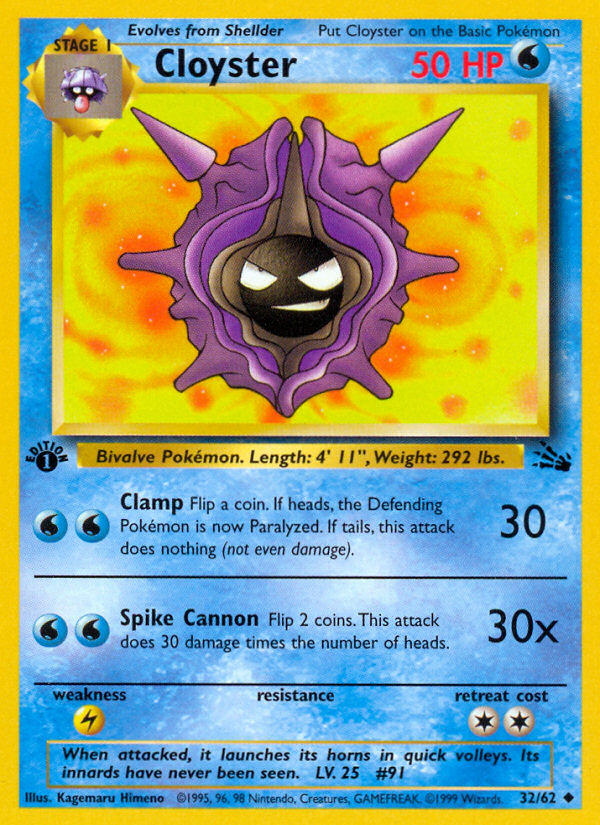
Created by Kagemaru Himeno for the Unknown Set set.

Created by Ken Sugimori for the Unknown Set set.
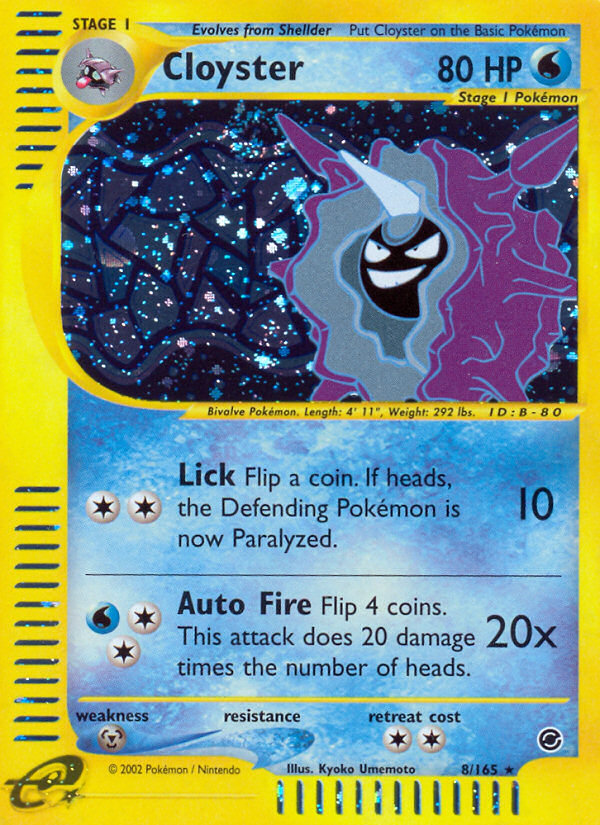
Created by Kyoko Umemoto for the Unknown Set set.
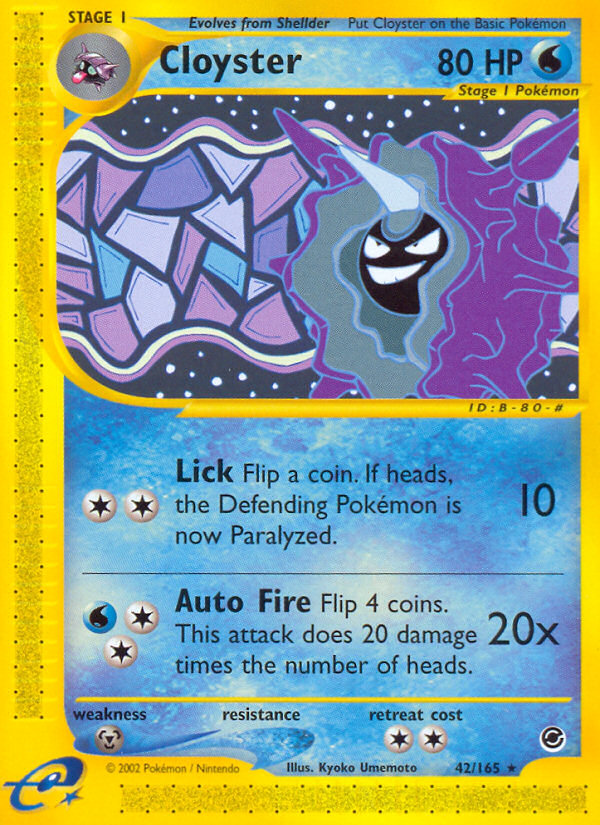
Created by Kyoko Umemoto for the Unknown Set set.
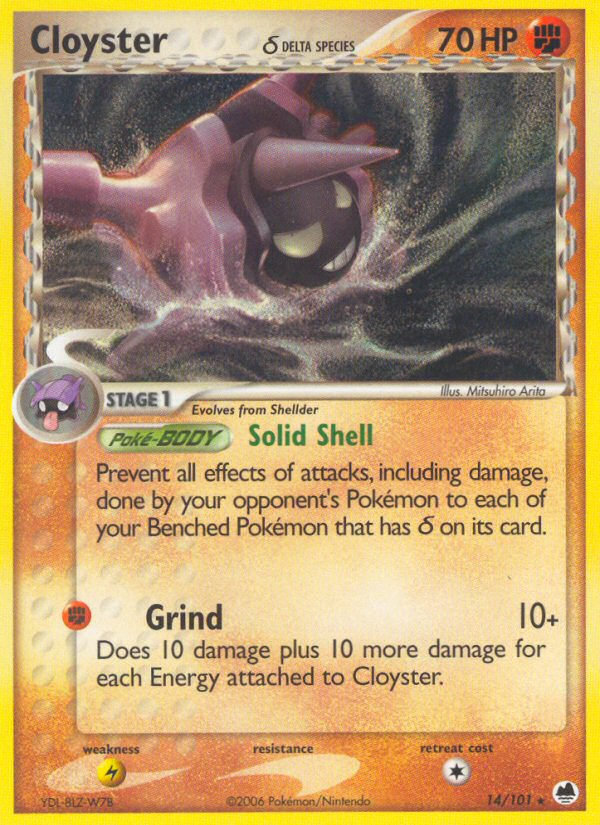
Created by Mitsuhiro Arita for the Unknown Set set.
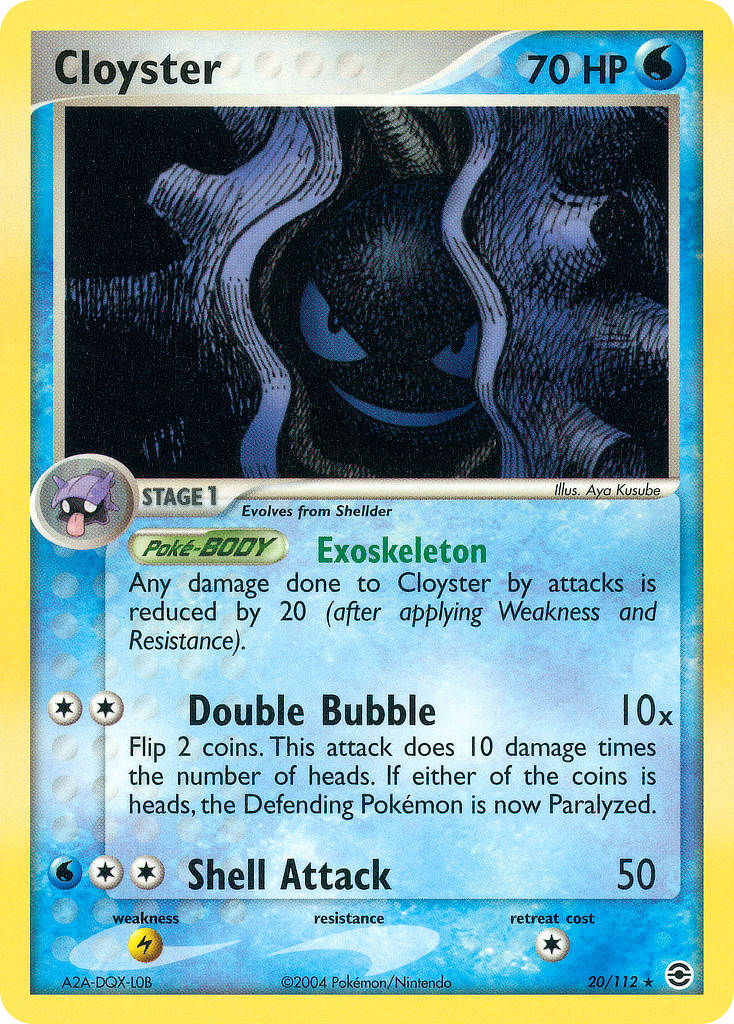
Created by Aya Kusube for the Unknown Set set.

Created by Masakazu Fukuda for the Unknown Set set.
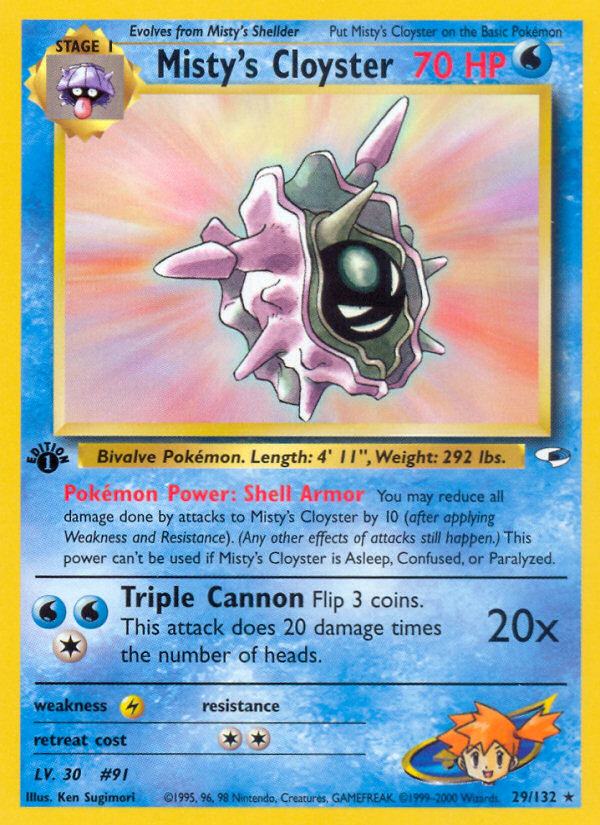
Created by Ken Sugimori for the Unknown Set set.
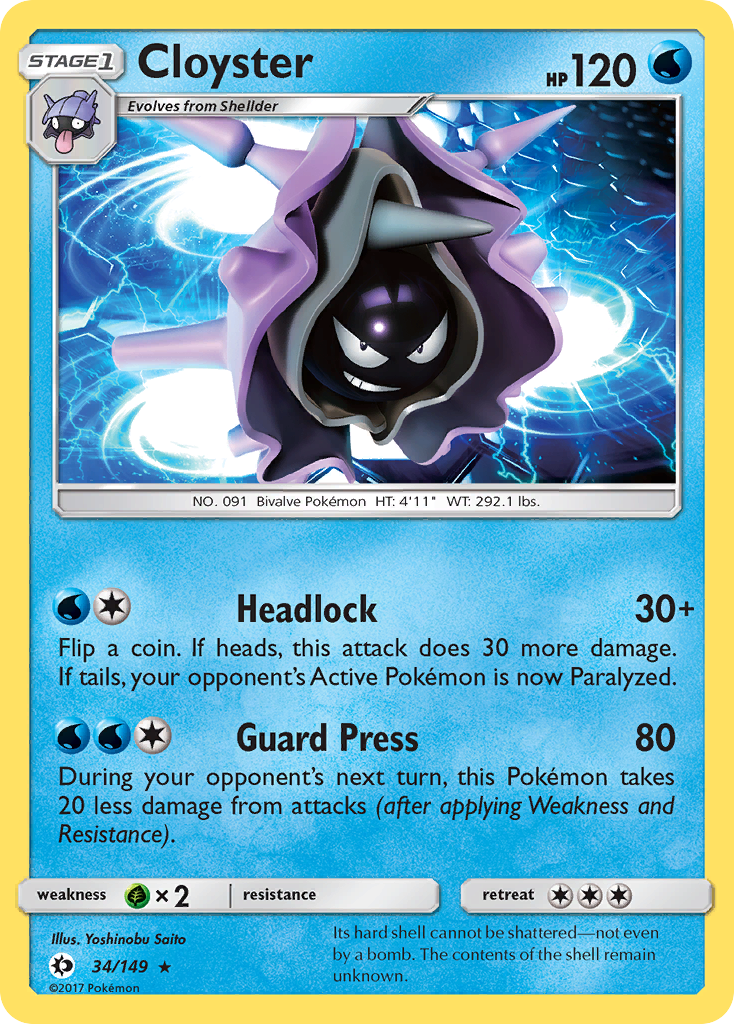
Created by Yoshinobu Saito for the Unknown Set set.
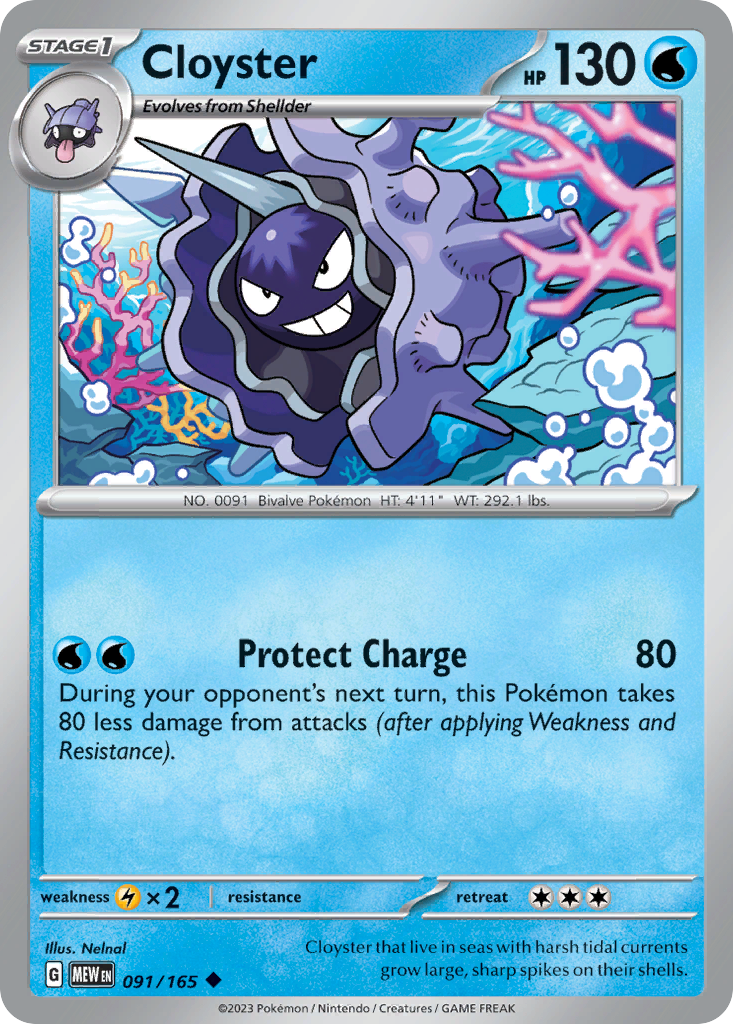
Created by Nelnal for the Unknown Set set.
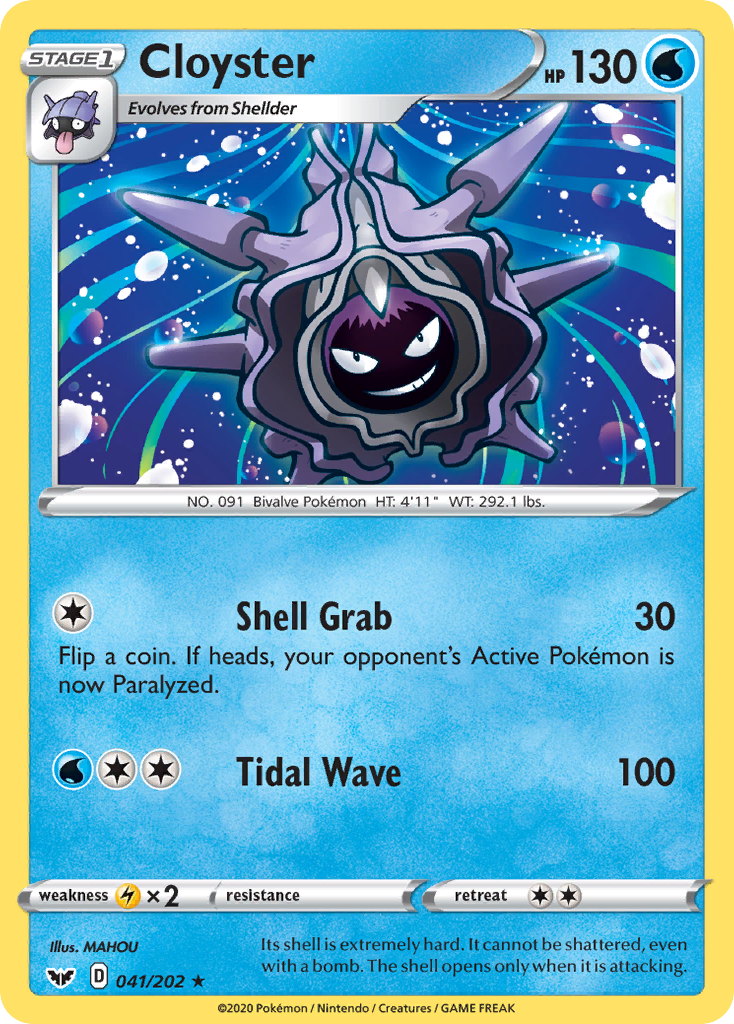
Created by Mahou for the Unknown Set set.

Created by Nagimiso for the Unknown Set set.

Created by Masakazu Fukuda for the Unknown Set set.
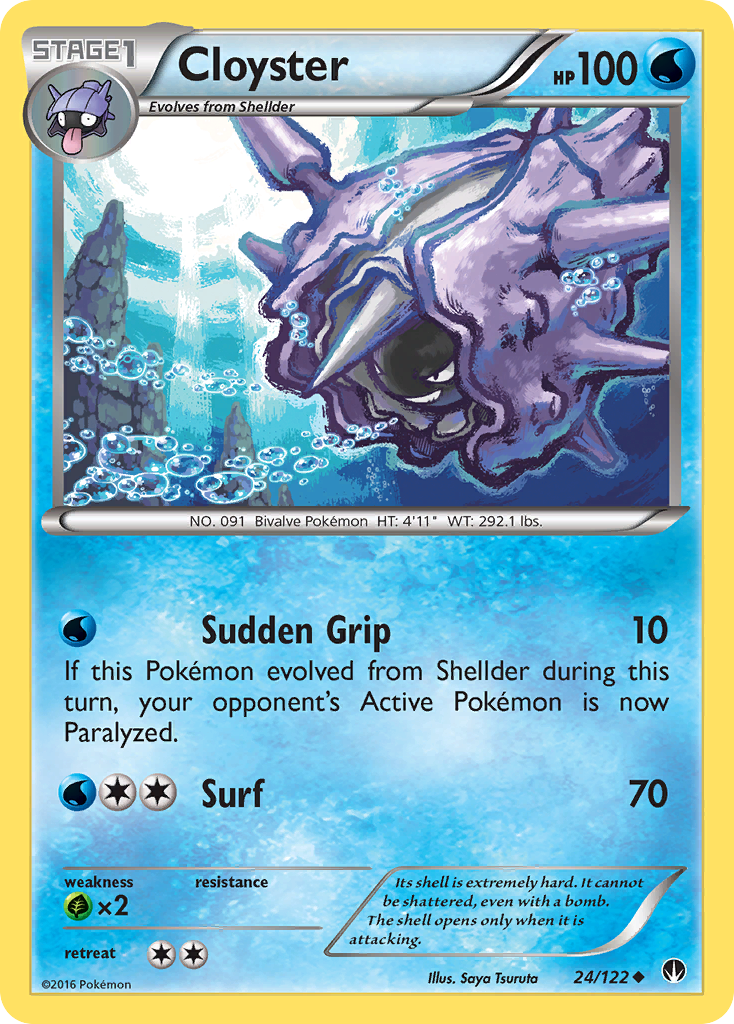
Created by Saya Tsuruta for the Unknown Set set.